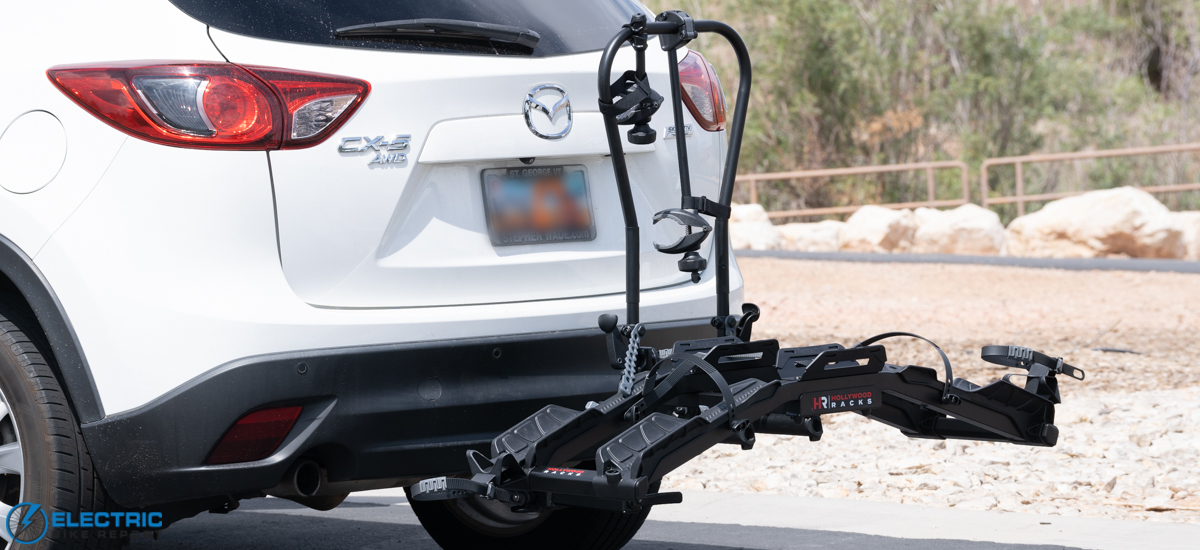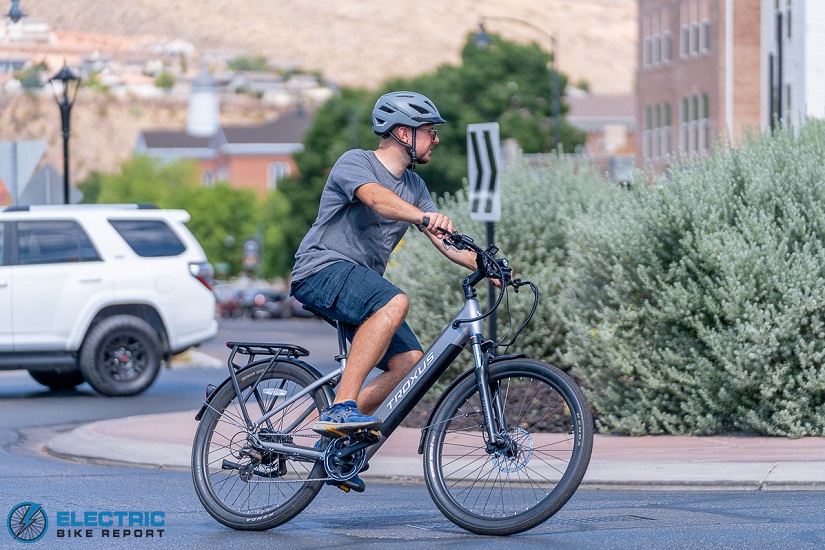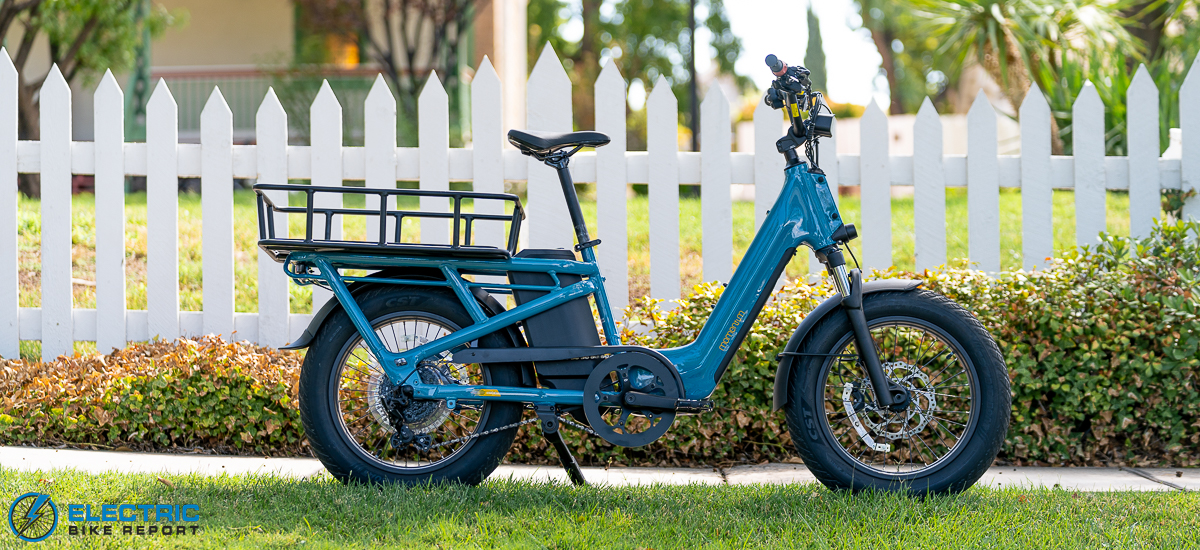
Battery
One aspect I was eager to test was the battery performance. The Radio Flyer utilizes a 48V 15Ah lithium-ion battery housed securely in the downtube. Flyer claims a range up to 50 miles is possible on a single charge. Upon first powering on, I was greeted by a full charge indicator.
Wanting to maximize my riding time, I invested in a second optional battery that easily mounts behind the seat tube. This essentially doubles my potential range to over 70 miles between charges. The batteries take around 8 hours to fully replenish using the included 2A wall charger. Thankfully, with a simple twist of a latch I can remove either battery to charge inside my home as needed.
On my initial testing rides with just one battery installed, I found the estimated range to fall just short using pedal assist. Having the second battery allows carefree cruising without precisely tracking my usage. The batteries hold their charge well, too, when not in use. The easy-swap design means I’ll always be able to top them off and have ample power for longer recreational rides.
Motor
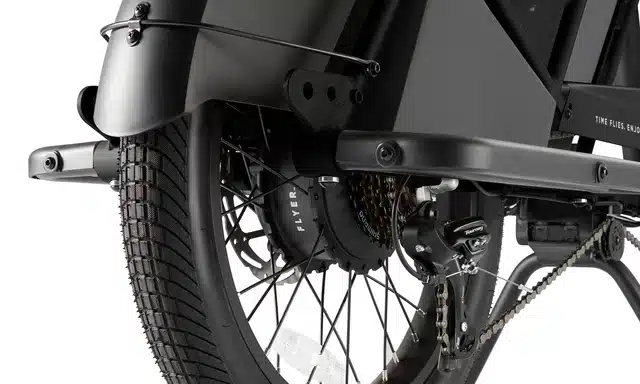
One of the standout features of the Radio Flyer is its reliable 500W brushless rear hub motor. From my initial rides around suburban streets with just a few pumps of the pedals,
I could already tell this motor packs a punch for an e-bike at its price point. Flyer claims an assisted top speed of 20 mph, easily attainable even when navigating some inclines in my area.
The rear hub drive provides smooth and consistent power delivery that mimics more expensive mid-drive motor designs. I appreciate how it allows light pedaling while still receiving full assistive power up hills and for accelerating. This makes riding a breeze even with my young children secured in the rear cargo area.
With two kids on board, I can feel the motor valiantly tackling our neighborhood’s slopes without lag. It provides the necessary extra torque to haul over 150 pounds of total weight easily. Between its performance and my family’s safety, this motor has proven a reliable workhorse for our daily routines.
Display

Another feature I appreciated about the Radio Flyer e-bike is its intuitive control interface. A small LCD touchscreen is integrated discretely on the left handlebar. From here, all functions are easily accessible without disrupting the bike’s retro styling.
Swiping through the five power assist levels is as simple as pressing plus and minus. An LED indicator illuminates to confirm your selection. Additionally, the screen provides a useful readout of my speed, battery level, kilometers traveled, and other ride stats.
Thanks to the ergonomic grips that flare out slightly for secure wrist positioning, riding is made more comfortable. I like the added styling touch of each grip ending with a subtle embossed “F” logo. These exceptional details showcase Radio Flyer’s commitment to user experience.
Whether commuting or enjoying a recreational cruise, I never feel tethered to the controls. They seamlessly integrate into my ride, and the well-placed touch screen is always available with the flick of a glance. Flyer has truly succeeded in delivering a technologically advanced e-bike through tested design.
Radio Flyer Mechanical Components and Accessories
Brakes
One aspect of riding safety I always consider closely is the braking. The Radio Flyer e-bike comes equipped with powerful Tektro hydraulic brakes, which bring it to a stop with minimal effort.
The brake levers feature an integrated cut-off sensor that immediately disables motor assist as soon as I squeeze, increasing my control.
Each lever control is simple and natural in its movements. I can smoothly speed up or slow down with just two fingers.
I like the left brake’s additional functionality as a classic-style bike bell. Its ring clearly notifies others of my presence on shared paths.
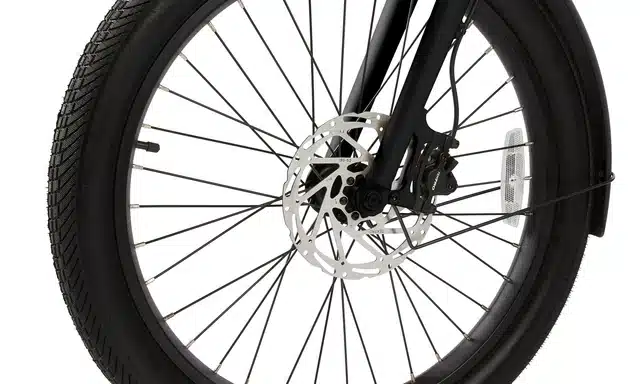
With 180mm rotors front and rear, these brakes have more than enough clamping force even under full load. On downhill sections, thanks to the responsive stopping power, I felt fully in control. After weeks of use in wet and dry conditions, I’ve found them reliably maintaining their optimal braking capability.
The quality Tektro components give me total confidence in stopping this heavier e-bike. Their performance adds peace of mind, so I can focus on enjoying the ride instead of slowing the momentum.
Frame

The solid 6061 aluminum frame and tapered steel fork provide a foundation for the Radio Flyer e-bike that feels durable yet lightweight at just over 70 pounds. I chose the medium size, which fits my 5’8″ height perfectly.
This frame is built to handle substantial loads with a max payload rating of 400 pounds. That’s a significant capacity even by cargo bike standards.
Between two small children seated safely in rear Thule Yepp pads and pockets fully stuffed, I came nowhere close to exceeding the 150-pound rear rack limit on my heaviest loads.
Thanks to the low step-through frame design, maneuvering with weight in the back feels balanced and stable. While the Radio Flyer handles paved trails with smooth comfort thanks to its balloon tires and suspension fork, rough or unpaved surfaces further highlight the lack of front suspension.
The attractive white powder coat finish maintains its luster after many miles. I can rely on this frame for my hauling needs for foreseeable family excursions. It comes in three sizes (S, M, L) to fit a wide range of riders and in four colors (white, black, blue, and red), allowing buyers to select the version that matches their personal style and needs
Drivetrain & Shifting
An important consideration for any bike is how smoothly the drivetrain allows gear changes while riding. The Radio Flyer utilizes a simple yet reliable 7-speed Shimano system. Shifting between gears is achieved effortlessly with the SL-TX50 trigger shifters mounted to the comfortable grips.
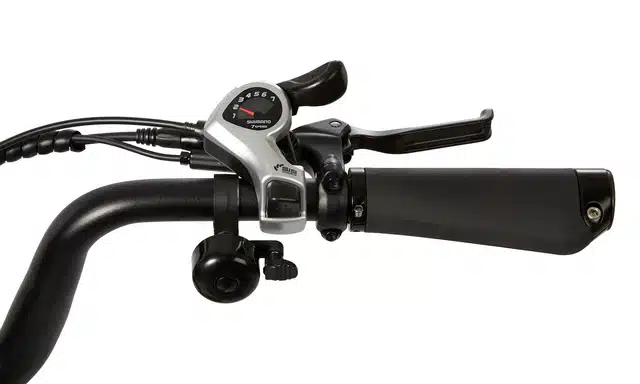
On steeper hills, I do really have to engage the motor via the pedal-assist to make it to the top in the lowest gears. However, for general cruising the range is sufficient. I’ve found myself staying mainly in the middle cogs.
One nice included extra is the guide pulley mounted just ahead of the kickstand to prevent chain slap over rough patches. This small addition contributes to an overall quiet and clean riding experience.
Week after week of pedaling through various terrains, the drivetrain has required no adjustments and shifted with the same crisp precision. Reliability is undoubtedly a strength of this no-frills Shimano kit. It executes its purpose of gear changes seamlessly during my daily routines.
Tires

One element that drew me to the Radio Flyer was the practical yet comfortable tire setup. The staggered sizing, with a 24-inch wheel up front and 20-inch in back, provides an ideal low step-through design for passengers and cargo.
The 2.4-inch wide Kenda tires are perfect for urban assists, handling road vibrations and errant debris with ease. On my daily routes they exhibit great control and stability whether navigating intersections or traversing occasional gravel. Inflating them to the proper 50 PSI has yielded reliably smooth rolling.
After many miles, the puncture-resistant tread shows no signs of abnormal wear. Between the burly width and Kenda’s reputation for durability, I don’t anticipate flats becoming a hindrance. When needed, ample clearance allows fitting fenders and basket accessories without issue.
The combination of wheel size and fat contact patch imparts confident turning and braking power. I truly appreciate how they contribute to an enjoyable ride characteristic that feels both nimble and substantive for transporting my family.
Extras & Accessories
One of the nice aspects of the Radio Flyer is its selection of thoughtful integrated and optional accessories. Standard conveniences include bright LED lighting front and rear, sturdy fenders, and a sturdy center kickstand for parking.
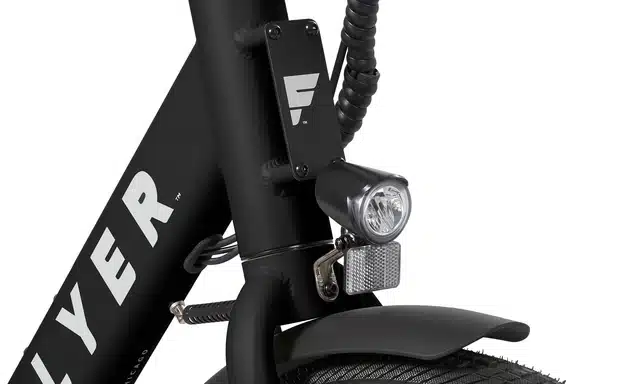

A must-have for my needs was the Kid & Cargo Carrier upgrade, swapping the rear rack for padded twin seats and an expansive wicker basket. Now I can transport both children safely or pack enough provisions without breaking my back.
Another investment I’m glad I made was the front handlebar basket. Being able to effortlessly access my phone, wallet and more as I pedal is invaluable. I appreciate how its integrated mounting keeps cargo weight positioned over the steerable front end.
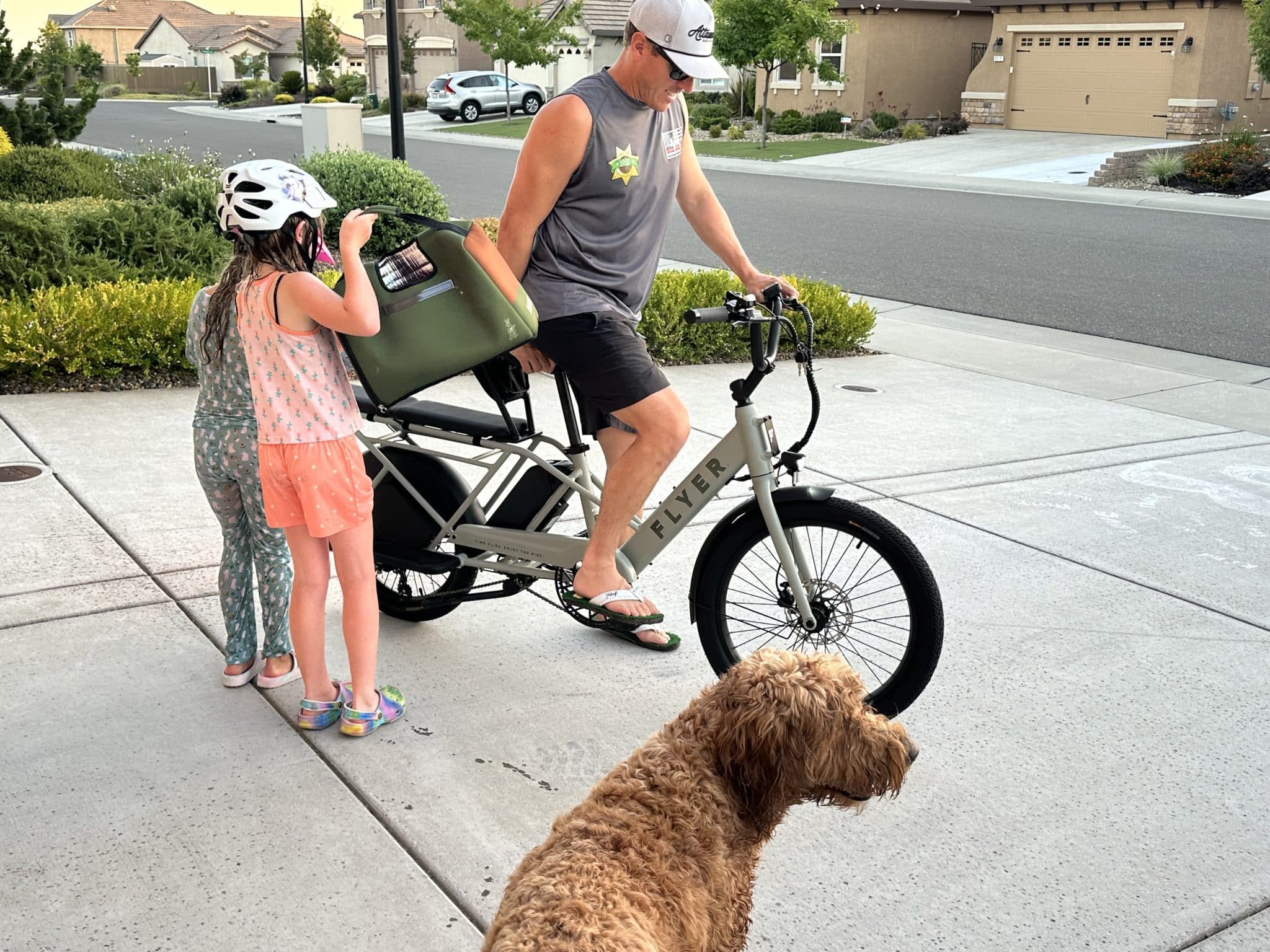
Other extras like multiple rear basket styles allow customizing cargo options. Water bottle loops are a simple bonus too for hydration on long rides.
While the selection is not as extensive as some competitors, these accessories have proven themselves essential for rolling groceries or kids along urban streets comfortably. Overall versatility is a strength.
Radio Flyer Performance Review
Acceleration & Speed
I was keen to evaluate was the Flyer’s performance attributes. Due to its rear hub motor design, there is a brief lag between pedaling and feeling the electric boost kick in. However, once engaged the acceleration more than makes up for it.
I found heavy reliance on the thumb throttle from takeoff provided the swiftest launches, especially with a full load. The bike’s weight necessitates initial shoves of power to smoothly merge into traffic flow.
Its five gear assist levels provide ample customization for virtually any terrain or cargo. Levels one and two hardly felt impactful for an e-bike, so I opted to primarily use the higher settings. Level five proved ideal for maintaining speeds up to 20 mph on the flats with casual pedaling. Any less and I could really notice the bike’s heft on downward slopes.
Overall the Flyer delivers satisfying zip when needed around town, without verging too far into motorized vehicle territory.
Range Test & Battery Charging
To truly evaluate the Flyer’s range claims, I set out for several test rides at varying assist levels with the battery fully charged. Using primarily levels 4 and 5 as I prefer the peppier acceleration, I achieved 20-25 miles before the final battery bar depleted.
This aligned fairly well with my typical daily needs, but investing in the second removable battery gives much-appreciated peace of mind. Total charges for both from empty takes the anticipated 8 hours with the integrated 2A charger. Thankfully, liberating either battery from the frame is simple: you can top them off indoors out of the elements.
On lighter riding days where I utilized lower pedal assists, 30+ miles was attainable from a single charge as Flyer claims. Overall battery life appears to conform to specifications after many charging cycles.
With the dual-battery option for doubling my average range, I’m satisfied with the Flyer’s power serving my routine needs without much pre-planning or anxiety about running dry mid-journey.
Brakes and the Brake Test
From the start, I was impressed by the sturdy Tektro brakes’ ability to smoothly modulate my speed. But to really put them through their paces, I engaged in extensive tests across varied terrains around town.
On pavement, full-speed stops from 20 mph felt secure and occurred within 30 feet as expected for an e-bike—a testament to the brakes’ predictable progressiveness. Their performance remained flawless and fade-free on wet surfaces too.
Gravel trails posed no issues either, allowing deft descending thanks to consistent feedback at the lever and confident traction under heavy breaking. The ability to confidently arrest downhill speeds of over 15 mph while fully loaded proved their mettle.
After each rigorous trial, inspecting the brakes revealed no signs of overheating, fading, fluid loss or line compression. The minerals within withstood compression forces without issue.
Through numerous testing iterations in all conditions, the Tektros passed with flying colors. Their powerful and linear stopping ability in any environment brings an unparalleled sense of safety to my rides.
Sizing
Proper sizing was crucial for a comfortable and confident ride on the Radio Flyer. At 5’8″ with average proportions, I fell squarely within the recommendations for the medium size dimensions.
The saddle height places my hips in the ideal power stroke range, while the standover clearance easily accommodates my height. Even with bigger boots on, stepping over the bike poses no issues.
The handlebar height aligns with my torso for an upright yet engaged riding position. Unlike some other cargo bikes, the low step-through frame and shorter bars make for nimble turns through busy city maneuvers.
At around 175 pounds, I come in well under the listed 220-pound max capacity. Combined with a weight distribution emphasizing the front-weight design, control and stability feel solid whether embarking solo or transporting kids.
Handling
With its relaxed step-through frame and cruiser styling, the Radio Flyer prioritizes comfort over raw performance. However, that doesn’t mean it lacks when the going gets tough.
On hills, I found myself challenged but able to power up with little effort, thanks to the supportive motor levels. Its low center of gravity also instills confidence when tackling steeper inclines with children or cargo aboard.
On our local paved trails, the Flyer absolutely shines. Its cushioned ride soaks up bumps to keep my family joyfully pedaling for miles without fatigue. Even with two kids snugly secured back in the protected Kid Cage, I feel their mass centrally positioned and in control.
While the wide balloon tires roll smoothly over most surfaces, I have wished for more front suspension on rougher unpaved paths. However, this cruiser is a dream for casual urban and recreational riding. Comfort is king without feeling sluggish.
Overall, the steady handling makes it easy to pilot fully loaded through busy areas to parks or the store. The Radio Flyer proves itself a stalwart family transportation solution.
Conclusion

After many miles and memory-making family excursions, I can confidently say the Radio Flyer e-bike has more than proven its $2,199 price to be a sound value. Its versatile utility for hauling kids, cargo, or a combination of both has transformed our daily routine.
Whether rolling to daycare, hauling groceries, or exploring new nature trails on weekends, this bike has expanded our mobility options considerably. The sturdy construction and thoughtful design details ensure it stands up to heavy use reliably.
Factoring in the durable construction, safety features for kids, extensive payload capacity, and overall fun factor, the cost compares quite favorably to other full-size electric cargo options on the market. Not to mention the reduced environmental impact and health benefits over driving short trips.
For any household seeking an inspiring way to replace vehicle trips under 5 miles, I wholeheartedly recommend taking the Radio Flyer for a test ride. Its effectiveness as both cargo workhorse and leisure cruiser is certain to have you reaching for the keys less and the pedals more.



